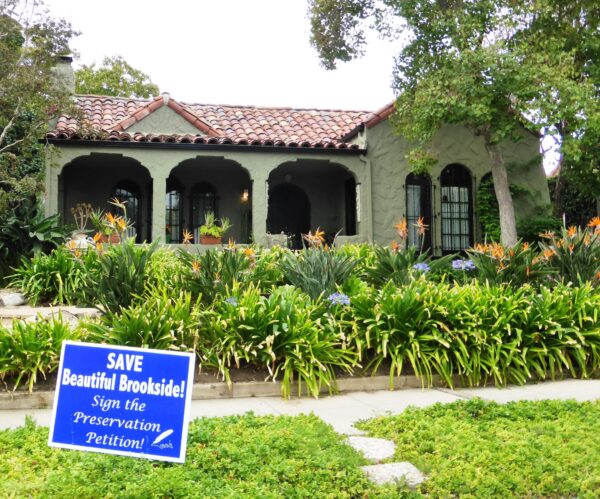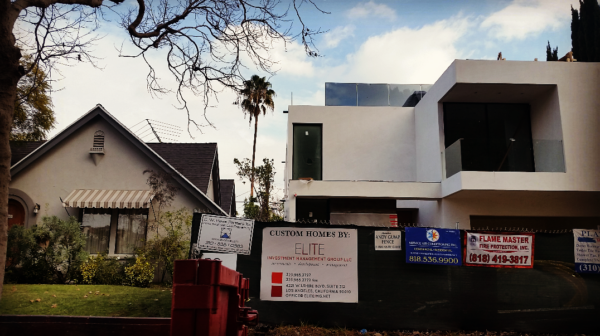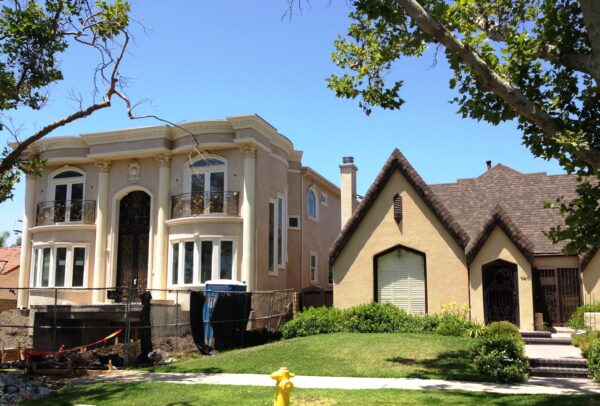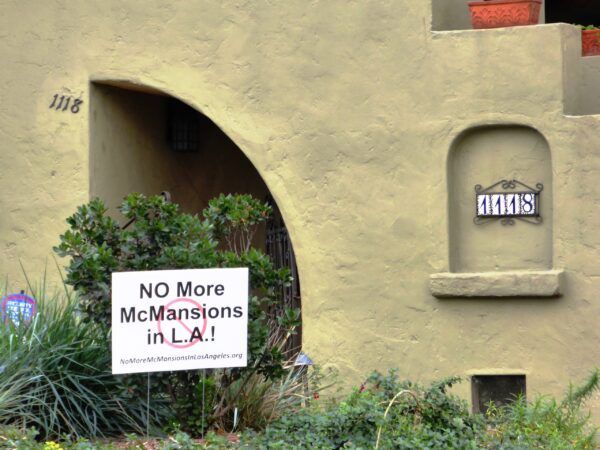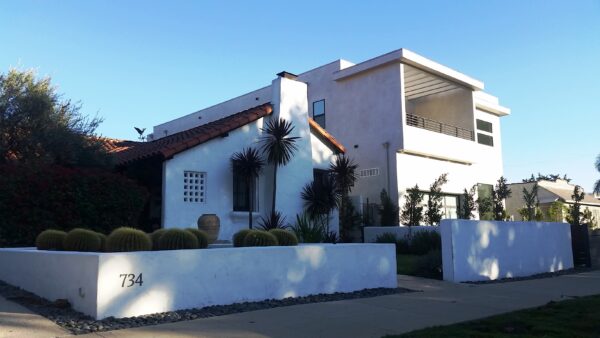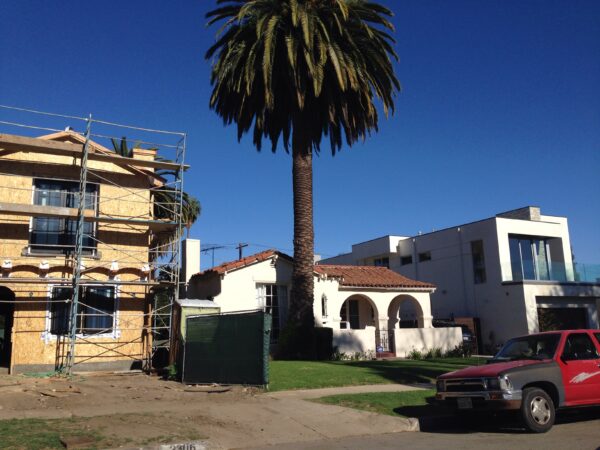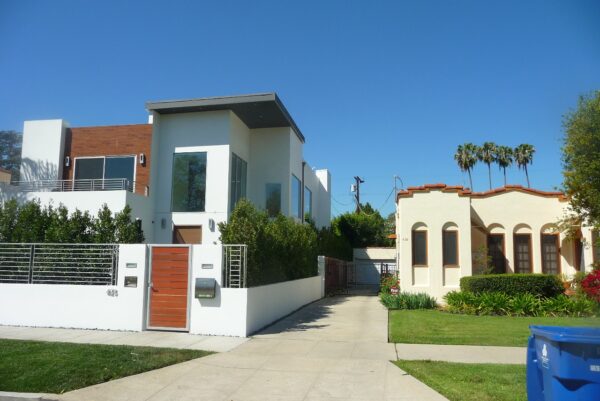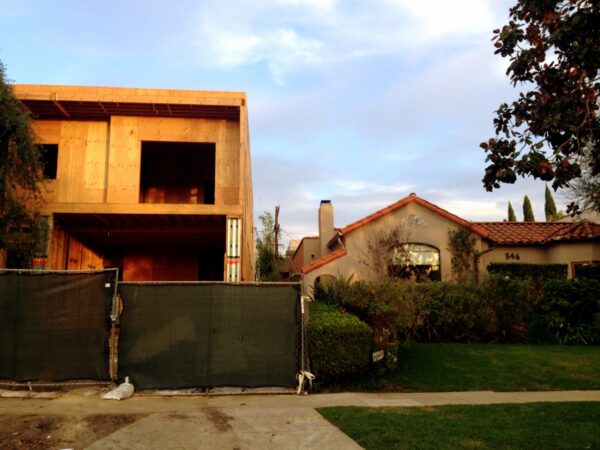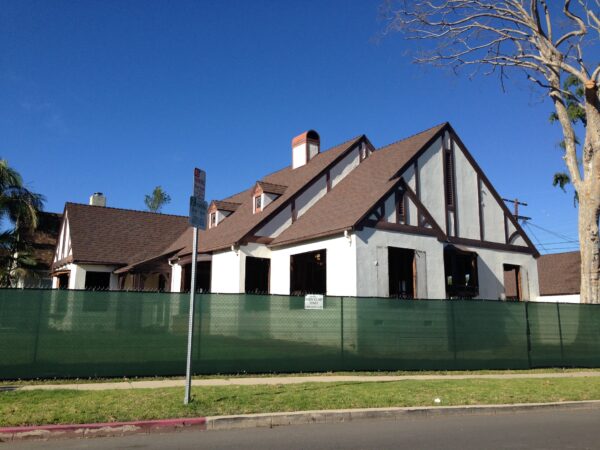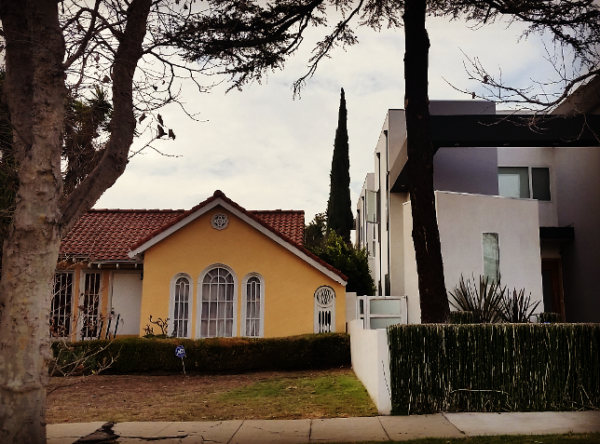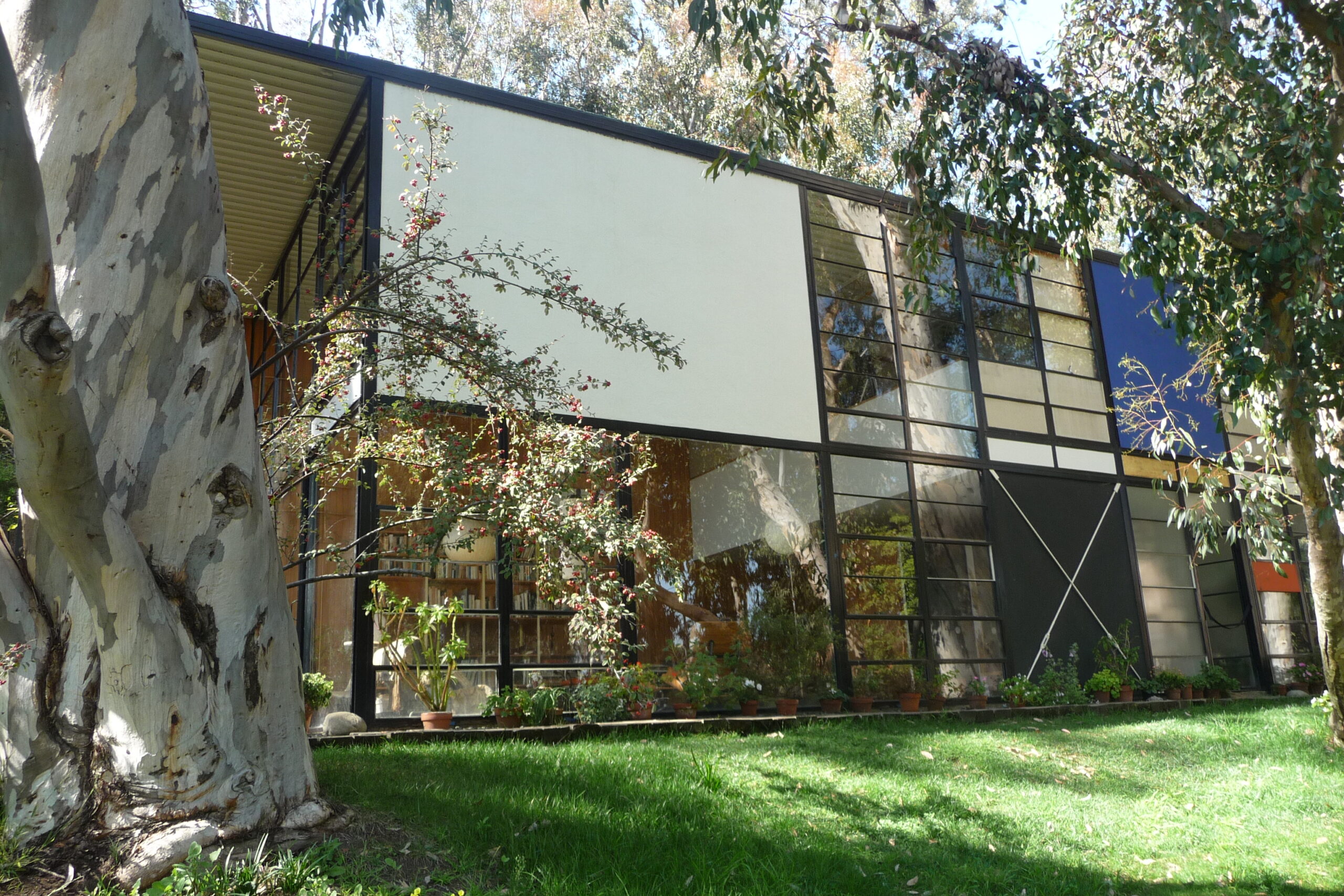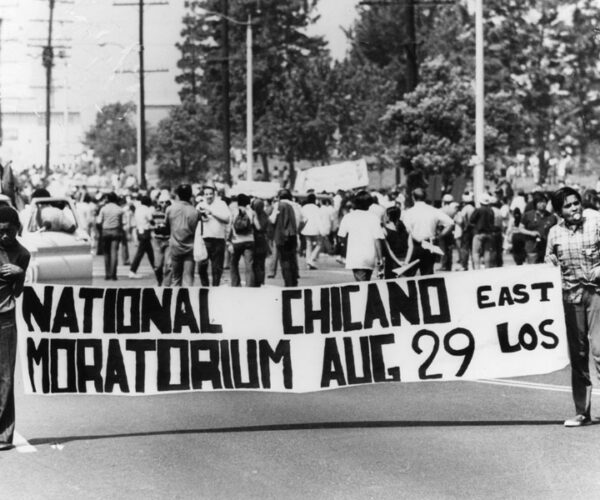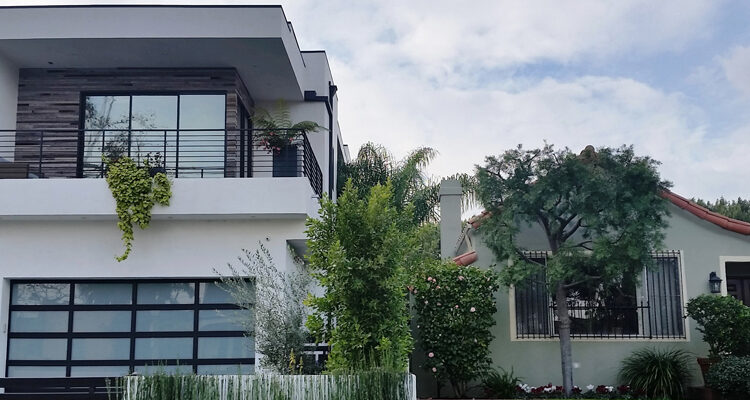
Saved
Mansionization and Teardowns – City of Los Angeles Ordinance
After nearly three years of efforts by the Conservancy and many neighborhood advocates across the city, on Wednesday, March 1, 2017 the L.A. City Council voted in unanimous support for the amended Baseline Mansionization and Hillside Ordinances (BMO/BHO).
Saved
Places that have survived threats of demolition or excessive alteration.
Issue Details
Development Approval Process
Overview
On March 1, 2017, the Los Angeles City Council unanimously voted to strengthen laws protecting neighborhoods from out-of-scale, single-family construction. The Conservancy and many neighborhood advocates across the City worked hard over the past several years to close loopholes in policies that have allowed the mansionization trend to sweep L.A.’s older and historic neighborhoods.
Los Angeles first passed the Baseline Mansionization Ordinance (BMO) in 2008 and the Baseline Hillside Ordinance (BHO) in 2011. Yet a few provisions in the baseline ordinances, including exemptions and design bonuses, actually encouraged the kind of out-of-scale homes it was designed to prevent. In October 2015, the City first introduced proposed revisions to the BMO/BHO, followed by a second update in April 2016.
In hearing after hearing, the Conservancy has advocated for sound policies and planning that allows neighborhoods to adapt for new growth without sacrificing character. We hope that the amended BMO/BHO Ordinances, and the Single-Family Zones, will create more incentives to retain and reinvest in existing houses, rather than replacing them with new, out-of-scale ones.
Through an informal campaign called “Make Garages Count,” one issue that we had hoped to fix remains. More than any other design element, attached garages at the front change the pattern, feeling, setting, and overall character of an older neighborhood. Previously the full 400 square feet of an attached garage was exempt. The new ordinance makes an improvement and counts half or 200 square feet. While imperfect, this is an important step in the right direction.
Thank you to everyone who has taken the time to call, email, and attend meetings about this issue. You’ve made a real difference in protecting neighborhood character. The Conservancy especially wants to thank Councilmember Paul Koretz for his leadership and help in making this happen.
How the BMO/BHO got to where it is today:
The last draft and the PLUM hearing was in follow-up to a December 7, 2016 meeting of the full City Council that discussed the BMO/BHO and redirected the City Attorney to prepare a new ordinance that restores key provisions previously stripped out by PLUM action on November 29. At that meeting the PLUM Committee Chair, Councilmember Huizar, directed the city attorney to draft a new ordinance that reinstated current measures and loopholes in the BMO/BHO, outlined through these recommendations:
- Reduce the guaranteed minimum Residential Floor Area (FAR) to 800 square feet in hillside areas.
- Reduce the maximum by-right grading quantities for R1 zoned hillside lots to 1,000 cubic yards.
- Restore the 400-foot garage exemption for front garages is, and retain the 400 square foot exemption for rear garages.
- Restore the Floor Area Ration (FAR) to 0.5 for lots under 7,500 square feet and retain the 0.45 for lots over 7,500 square feet.
- Increase the encroachment plane in the R1 Zones to start at 22 feet.
The Conservancy and a broad coalition of neighborhoods across the City did not support the adoption of measures numbers 3, 4, and 5. We successfully argued these represent more of the same and maintained the current status quo with the BMO/BHO, where loopholes continue to hurt L.A.’s older and historic neighborhoods. Only Councilmember Bonin’s office put forward these measures.
The PLUM Committee’s action came as a surprise, given the overwhelming amount of community support in favor of the proposed amendments drafted by City Planning staff and recommended by the City Planning Commission. More than thirty-five residents who attended the PLUM meeting spoke in support of the proposed amendments. They represented a diversity of neighborhoods, including Benedict Canyon, Beverlywood, Bel Air, Beverly Crest, Beverly Wilshire, Brentwood, Crestview, La Brea/Hancock Park, Leimert Park, Picfair Village, Silver Lake, South L.A., and Studio City.
Staff representing City Councilmembers Ryu, Koretz and Bonin also spoke. Only Councilmember Bonin’s office suggested reinstating current measures and loopholes in the BMO/BHO. Without any discussion by the PLUM Committee, Councilmember José Huizar, Committee Chair, directed the city attorney to draft a new ordinance taking into account the Council offices’ recommendations. Since there were conflicting recommendations from the Council offices, the PLUM Committee’s directive was unclear.
In addition to recommending reinstating the 400 square foot garage exemption, the PLUM Committee also recommended reinstating the current Maximum Residential Floor Area (RFA) of 0.50, reversing the City Planning Commission’s recommendation to reduce it to 0.45. The Conservancy supports a reduction in the RFA ratio, which is a fundamental problem with the current BMO/BHO. Nearly ten years of experience with the BMO/BHO has shown us that a minimal reduction would help keep homes to scale in older neighborhoods.
The PLUM Committee’s action signaled a disappointing direction, following years of discussion and overwhelming community support for the proposed amendments. This was in follow-up to the July 14 meeting of the City Planning Commission, where steps were taken to strengthen the BMO/BHO further. Now the action of the PLUM Committee calls these steps into question.
Planning Commissioners voted in support of a measure that reduces the impact of attached, front-loaded garages on older neighborhoods. Instead of entirely exempting garages from the allowable square footage count, now a portion of the attached garage will be counted. This is welcome news given that many new houses with an attached, front-loaded garage contribute to the loss of community character, with large bulky masses that severe and break the patterns of older, established neighborhoods. The amendment is not perfect but gets us closer to where we need to be.
The Conservancy and many neighborhood advocates pressed hard on this issue, asking for a simple and straight-forward fix to the amended BMO/BHO ordinance. More than fifty people spoke in favor of the current amendments while citing the front garage exemption as an outstanding problem that still needed to be resolved. Many L.A. neighborhoods were well represented by residents from Beverly Grove, Beverlywood, Brentwood, Carthay Square, Crestwood Hills, Hancock Park, La Brea, Laurel Canyon, Leimert Park, Marquez Knolls, Pico-Union, Rancho Park, Studio City, West Adams, Westwood, and more.
People spoke passionately on this issue, asking for policy amendments that better helps manage growth so that new homes are “built to scale,” with one resident stating, “Character counts, it defines us, and matters in a neighborhood.” Others asked, “Why should developers have the right to run over entire neighborhoods?” and another stated, “Mansionization is a property right gone wrong.”
Throughout Greater Los Angeles, older and historic neighborhoods are increasingly at risk of losing their unique sense of place as a result of needless demolition and incompatible new development. Though not a new phenomenon, the widespread teardown and mansionization trend threatens to overwhelm older neighborhoods rich in character, which are increasingly vulnerable due to their locations and land values.
Many proponents of this type of development claim that building larger homes increases density. Yet not everything touted as “density” really is density. Countless older homes have been demolished and replaced with massive, out-of-scale new houses—adding square footage, not density.
The Conservancy works closely with residents, neighborhood groups, and the City of Los Angeles to conserve neighborhood character through several ambitious policy proposals. The Conservancy submitted comments on both drafts of the Baseline Mansionization Ordinance (BMO) amendments in January and June 2016.
The City introduced amendments to the Baseline Mansionization and Hillside Ordinances (BMO/BHO), which are currently undergoing environmental review.
More than twenty neighborhoods have received temporary relief from overdevelopment as a result of a series of Interim Control Ordinances (ICO) that initially went into effect in March 2015. Five additional neighborhood areas have been added and benefit from the same protections. In March of 2017, the first grouping of neighborhoods received a new Single-Family Zone designation as part of the City’s rollout of its new zoning code, an initiative known as re:code L.A. Five of the ICO neighborhoods have been proposed as designated as Historic Preservation Overlay Zones (HPOZs).
The Conservancy and our neighborhood supporters have also successfully advocated for funding for neighborhood conservation positions in the Department of City Planning, including increased staffing for the HPOZs. Learn more about these efforts >>
To read more about how the teardown trend is also affecting older and historic multi-family residences, please click here >>
About This Issue
Baseline Mansionization and Hillside Ordinances
The City of Los Angeles first passed the Baseline Mansionization Ordinance (BMO) in 2008 and the Baseline Hillside Ordinance (BHO) in 2011. Yet a few provisions in the baseline ordinance, including exemptions and design bonuses, actually encouraged the kind of out-of-scale homes it was designed to prevent.
On May 1, 2014, Los Angeles City Councilmember Paul Koretz introduced a motion directing the Department of City Planning to address the shortcomings in the BMO/BHO by doing four primary things: 1) re-evaluate Residential Floor Area exemptions; 2) re-evaluate design bonuses; 3) remove green building bonus and loophole; and 4) reduce R1-Zone Residential Floor Area and allowable size of new residential construction. In the two years since this directive was issued teardowns have continued largely unabated (with the exception of ICO neighborhoods).
The City introduced the first revisions to the BMO/BHO in October 2015, followed by a second update in April 2016. The Planning Department convened four public meetings regarding the amendments in May 2016, followed by the release of the Initial Study/Negative Declaration (environmental review documents) in June 2016.
At our core, we believe that the amendments to the BMO should provide safeguards to all neighborhoods, not just those that are currently affected or those afforded R1 Single-Family Zones. The neighborhoods under the protection of the Interim Control Ordinance (ICO) will receive the new Single-Family Zone designation, which is expected to go above and beyond the BMO. Minus any other types of intervention outside the BMO/BHO, the rest of L.A.’s neighborhoods, however, will continue to experience teardowns and mansionization at a rapid rate.
Interim Control Ordinance
In response to increased development pressures and public outcry over the mansionization and teardown trend, the City adopted an Interim Control Ordinance (ICO) in March 2015 for twenty older and historic neighborhoods. The ICO was designed to provide a two-year cooling-off period while the City adopted long-term measures to curtail incompatible development.
There five ICO neighborhoods that were identified as potential Historic Preservation Overlay Zones (HPOZs), the ICO limits demolitions and substantial alterations of single-family homes. The potential HPOZs are Carthay Square, El Sereno Berkshire Craftsman District, Holmby Westwood, Oxford Square, and Sunset Square.
The ICO regulates scale, massing, height, and setbacks of additions and new construction in the fifteen remaining neighborhoods: Faircrest Heights, Kentwood, La Brea Hancock, Larchmont Heights, Lower Council District 5, Inner Council District 5, Mar Vista/East Venice, Miracle Mile, Old Granada Hills, South Hollywood, Valley Village, Bel Air, The Oaks of Los Feliz, Beverlywood, and Fairfax Area. Five additional neighborhood areas are expected to be added soon: Brookside, Picfair Village, Sherman Oaks, Sycamore Square, and Wilshire Vista.
Under the terms of the ICO, the City expects to adopt the proposed HPOZs and introduce the new Single-Family Zone for the remaining neighborhoods by March 2017.
Our Position
The Conservancy continues to advocate for sound policies and planning that allow neighborhoods to adapt for new growth without sacrificing character. We hope that the amended Baseline Mansionization and Hillside Ordinances (BMO/BHO) and the Single-Family Zones will create more incentives to retain and reinvest in existing houses, rather than replacing them with new, out-of-scale ones.
Though the current BMO/BHO amendments do propose to remove some key loopholes, we believe that additional revisions are needed to fully protect L.A.’s neighborhoods. We thank City Planning staff who have responded to our previous comments and now recommend changes to several of these areas (see UPDATE section).
Recommendations:
1) Remove the Exemption for Attached, Front-loaded Garages: A long-standing problem with the current BMO/BHO ordinance is the exemption for required covered parking, allowing up to 400 square feet of an attached garage to not count as part of the overall RFA calculation. This issue has been raised repeatedly as a problematic “freebie” and loophole that results in incompatible design impacts to an older neighborhood.
The current code amendment calls for retaining a portion of this provision, reversing the October 2015 amendments that eliminated it. At the time, the Conservancy and others applauded the City for addressing this problem. At the core, attached garages more often than not result in new homes that do not fit the character of an older neighborhood. A majority of the City’s 1900s to 1940s neighborhoods have detached garages located at the rear, with adjacent properties separated by long driveways.
More than any other design element, attached garages severely alter and break the pattern, feel, setting and overall character of an older neighborhood. The design emphasis and focus of many new houses built is most often on the garage, not the house itself or a pedestrian orientation. At the front of the property and immediately off the street, a front-loaded garage often adds significant bulk and eliminates the buffer of a long driveway and fails to blend in with existing houses in a 70 to 100-year old neighborhood. The long driveway buffer is important and has traditionally provided adjacent owners with some privacy and relief, rather than have a new house occupy most of the width of the lot.
The Conservancy understands part of the rationale for retaining the attached garage exemption is because many of the affected Interim Control Ordinance (ICO) neighborhoods will be receiving their own new Single-Family Zones. This includes a large percentage of the City’s R1 Zone single family housing, especially those within older and historic neighborhoods. The Single-Family Zones will effectively trump the BMO/BHO provisions and are expected to address this specific aspect. However, these zones are yet to be implemented or fully vetted. Anything could still happen whereby this issue is not satisfactorily addressed.
Further, while much of the R1 Zones are covered by the current ICO measure, other neighborhoods are left out and will remain vulnerable for years into the future. One prominent example is historic Leimert Park in South Los Angeles, a large neighborhood of predominately 1920s and 30s Spanish residences that is currently experiencing a resurgence.
The Conservancy is strongly urging the City to simply count the square footage of attached garages. It is a simple and straight-forward approach. Anyone could still be allowed and have the option to build an attached garage, as this would not foreclose that opportunity. However, it would need to count as part of the overall RFA. This approach would address a well-established and real problem associated with the current BMO/BHO.
UPDATE: In response to public comments on the latest amendments at the July 14, 2016 City Planning Commission meeting, an amendment was made that reduces the impact of attached, front-loaded garages on older neighborhoods. Instead of entirely exempting garages from the allowable square footage count, now a portion of the attached garage will be counted. This is welcome news given that many new houses with an attached, front-loaded garage contribute to the loss of community character, with large bulky masses that severe and break the patterns of older, established neighborhoods. The Conservancy will continue to press for including all of the garage square footage as part of the total allowable square footage count.
2) Reduce the Maximum Residential Floor Area (RFA): The May 2014 City Council directive is clear, specifically calling for the reduction in the R1 Zone Residential Floor Area. The current code amendments do not do this. Instead, they reverse previous October 2015 recommendations to lower the maximum RFA from 0.50 to 0.45.
The Conservancy supports a reduction in the RFA ratio as it is a fundamental problem with the current BMO/BHO ordinance. Nearly ten years of experience with the BMO/BHO has shown us that a minimal reduction would help. For a typical-sized residential lot in Los Angeles — those 7,500 square feet or less – only forty-five percent could be built upon. This is a needed improvement from the current RFA and is more in keeping with the character and scale of older neighborhoods.
UPDATE: In response to public comments on the latest amendments, the July 14, 2016 Recommendation Report now recommends that the BMO/BHO ordinance reduce the maximum RFA from 0.50 to 0.45. However, it will require City Planning Commission action to act on this recommendation and modify and amend the currently proposed ordinance.
3) Assess Need for Zoning Administrator’s Authority to Grant 10% Adjustments: This provision is a carry-over from the existing BMO/BHO ordinances, allowing the Zoning Administrator independent authority to increase the size of a new house, granting up to 10 percent additional RFA and possibly without the benefit of a public hearing. In general, we strongly urge the City to remove this provision. It is unclear why a separate “relief” mechanism (as opposed to the City’s current variance process) is needed as a stand-alone process here. It would be helpful to understand better why this is required and whether or not it has been used effectively in the past. The Conservancy recommends looking to specific examples to illustrate how this type of discretionary approval has been applied in the past and whether or not it is desired and needed going forward.
UPDATE: In response to public comments on the latest amendments, the July 14, 2016 Recommendation Report now recommends that the BMO/BHO ordinance prohibit the Zoning Administrator from waiving a public hearing when deciding whether or not to grant up to 10 percent additional RFA, and up to 20 percent for yard, area, building line, and height requirements.
4) Eliminate Exemption for Covered and Lattice Roof Porches, Patios, and Breezeways: Collectively, if poorly designed, porches, patios, and breezeways can add bulk and impact the character of a neighborhood and adjacent property. These types of elements can still add bulk and, minus any oversight, can easily be abused. The Conservancy recommends these building elements count as part of the overall RFA, not exempted as currently proposed. The Conservancy suggests the inclusion of these elements within the RFA count or, at the very least, setting a maximum threshold trigger to discourage abuses.
UPDATE: In response to public comments on the latest amendments, the July 14, 2016, Recommendation Report now recommends that the BMO/BHO ordinance entirely eliminate the exemption for covered porches, patios, and breezeways.
Issue Resources
- re:code LA
- Neighborhood Conservation Initiative, Department of City Planning
- Staff Recommendation Report, BMO/BHO Amendments, July 14, 2016
- Proposed BMO/BHO Amendments, Revised April 2016
- BMO/BHO Amendments, Initial Study/Negative Declaration
- BMO/BHO Amendments Fact Sheet, July 2016
- Interim Control Ordinance for Proposed HPOZs, March 2015
- Interim Control Ordinance for Neighborhood Conservation Areas, March 2015
- Draft Interim Control Ordinance for New Neighborhoods, June 2016
- Draft Basement Mansionization/Hillside Ordinances (BMO/BHO), January 13, 2017
- “McMansions Are Killing the Los Angeles Urban Forest.” Business Insider, May 8, 2017
- “L.A. Lawmakers Finalize New Measures to Curb 'Mansionization'.” Los Angeles, Times March 1, 2017
- "Commission passes mansionization relief," Beverly Press, July 20, 2016
- "L.A. takes a step toward tighter rules to curb mansionization," Los Angeles Times, July 14, 2016
- "LA takes new steps to fight McMansions," LACurbed, March 1, 2017
